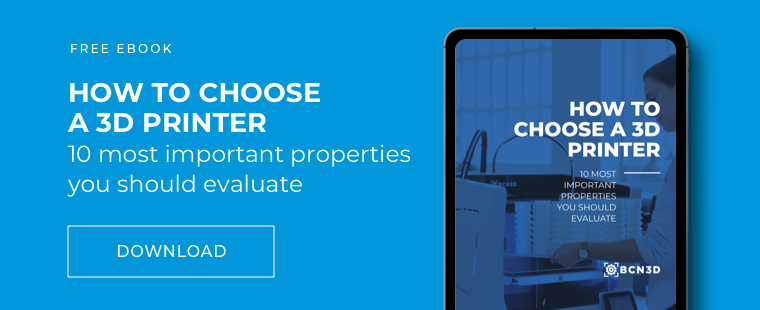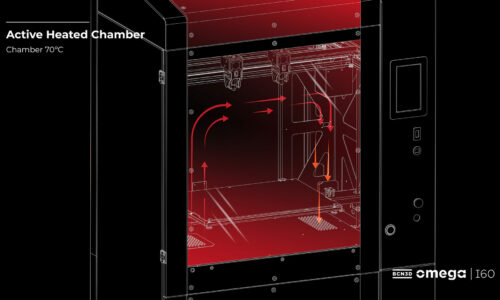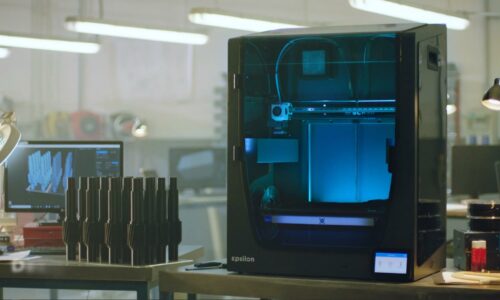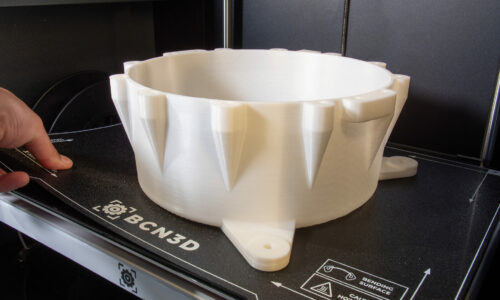What Can You Make With a 3D Printer? 5 Amazing Ideas
The question “what can you make with a 3D printer” is almost impossible to answer. The truth is that the options are almost limitless, especially if you have ingenuity and creativity on your side.
But, sometimes, the answer doesn’t have to be super fantastical either. Especially when we’re talking about typical professional 3D printers that you can find in an office or manufacturing setting.
In this article, we’ll demonstrate the possibilities of what you can make with a 3D printer, from the common to the extraordinary.
Common Professional Uses of 3D Printers
3D printers are used to make many different objects across many, many different industries. From medical-grade tools and prosthetics to research purposes, to parts and tools for engineers and manufacturers, 3D printing has proven to be a useful solution across many sectors. Here are just 3 everyday examples of what 3D printers are used for.
Prototypes
Perhaps one of the most common uses of 3D printing is for prototyping. Using CAD software and a 3D printer, designers, architects, and researchers can develop prototypes and physical mockups that allow them to take their ideas to new heights.
These prototypes can range from many different things, such as shoes, cars, glasses, or even buildings. 3D printing is a common solution for prototyping because it saves time, money, and keeps the prototyping process in-house. It is especially useful for rapid prototyping, as it allows users to quickly produce many prototypes and compare the different aesthetics, designs, and functionality of each.
Tools
Another common use of 3D printers is to develop tools and parts that can then be used for various manufacturing and engineering purposes. Depending on the material used, 3D printed parts and tools can be as strong and durable as ready to buy products.
Having a 3D printer for manufacturing or engineering purposes speeds up workflows, reduces costs, and creates more customization options. 3D printing for tooling also allows manufacturers more options in what they can make.
For example, TensaBelt, creators of barriers, cones, and roll-up belts that help manage queues, can quickly make jigs and fixtures that are customized for unique tasks and “100% functional in [their] daily use” thanks to 3D printing.
Prosthetics
The ability to create prosthetics using 3D printing may now be common, but it is still nothing short of revolutionary. 3D printed prosthetics are customizable to the users, durable, and can vary in complexity.
3D printed prosthetics are especially useful for children, who are constantly growing and may need frequent updates. 3D printed prosthetics are typically cheaper than traditional ones, and can be made faster and more personalized thanks to 3D scanning.
Extraordinary Uses of 3D Printers
Along with the everyday uses of 3D printing, you can also turn completely out-of-the-box ideas into realities using 3D printers. These prints are certainly not common, but they demonstrate the creative problem-solving power of this technology.
Coral Reefs
3D printing is being used to help heal our planet and add a little more beauty back in our waters. Researchers at the University of Delaware are 3D printing coral reef structures that help baby coral grow, allowing for full reefs to grow over time.
Using a biodegradable material, the structure naturally decays over time without harming the coral or its environment. This example highlights the extraordinary way in which an everyday professional 3D printer can be used.
3D Printed Buildings
Did you know that it is now possible to 3D print buildings? The world’s largest 3D printed building was just completed in October 2019. And the world’s tallest 3D printed building, a 5-story apartment, was created in 2015.
These are certainly not the average print job and require a totally different type of printer. But, the buildings are still built layer by layer, thus falling into the additive manufacturing category. While technology may need some more development before this becomes an everyday option, it is certainly an exciting step forward.
Closing Thoughts
At the end of the day, the question “What are 3D printers used for?” is almost impossible to answer because there are so many possibilities that the options are truly endless. 3D printers have been around for many years, but new innovative ways to use this technology are being invented every day. We cannot help but wonder what the next one will be!





